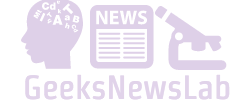Here are some key tools and practices to consider for development:
- React DevTools: React DevTools is a browser extension that allows you to inspect and debug React component hierarchies. It provides a dedicated tab in your browser’s developer tools for inspecting component props, state, and performance profiles.
- Code Editors and Extensions: Choose a code editor that suits your preferences and supports React development. Popular options include Visual Studio Code, Atom, and Sublime Text. Install extensions that provide features like syntax highlighting, code snippets, and automatic formatting (e.g., ESLint, Prettier).
- Create React App (CRA): Create React App is a popular tool for setting up a React project quickly. It provides a preconfigured development environment with all the necessary build tools, configurations, and a development server. It abstracts away much of the initial setup, allowing you to focus on writing React code.
- Webpack: Webpack is a module bundler commonly used in React projects. It helps manage and bundle your project’s JavaScript, CSS, and other assets. Webpack offers features like hot module replacement, code splitting, and optimized production builds.
- Babel: Babel is a JavaScript compiler that allows you to use the latest JavaScript features and transpile them to a compatible version for different environments. It is commonly used in React projects to enable features like JSX syntax and ECMAScript modules.
- ESLint: ESLint is a popular JavaScript linter that helps enforce coding standards and best practices. Configure ESLint with React-specific rules to catch common errors and maintain code consistency within your React project.
- React Router: React Router is a library for handling routing in React applications. It enables you to define and manage different routes in your application, enabling navigation between different pages or views.
- Testing Frameworks: Choose a testing framework like Jest or Mocha, along with libraries like React Testing Library or Enzyme, to write unit tests, integration tests, and end-to-end tests for your React components and applications.
- Continuous Integration (CI) and Deployment: Set up a CI/CD pipeline to automate your build, test, and deployment processes. Tools like Jenkins, Travis CI, or CircleCI can help automate tasks such as running tests, generating production builds, and deploying to hosting platforms like Netlify, Vercel, or AWS.
- Git and Version Control: Utilize Git for version control to manage your codebase efficiently. Learn common Git commands and practices, and leverage platforms like GitHub or GitLab for collaborative development and code reviews.
Additionally, consider using package managers like npm or Yarn, task runners like Gulp, and other tools or libraries that align with your specific project requirements.
Remember, the choice of tools and workflow practices can vary based on your project’s needs and your team’s preferences. Experiment with different tools and workflows, and adapt them to your specific development environment to optimize your React development process.
Happy Learning!
